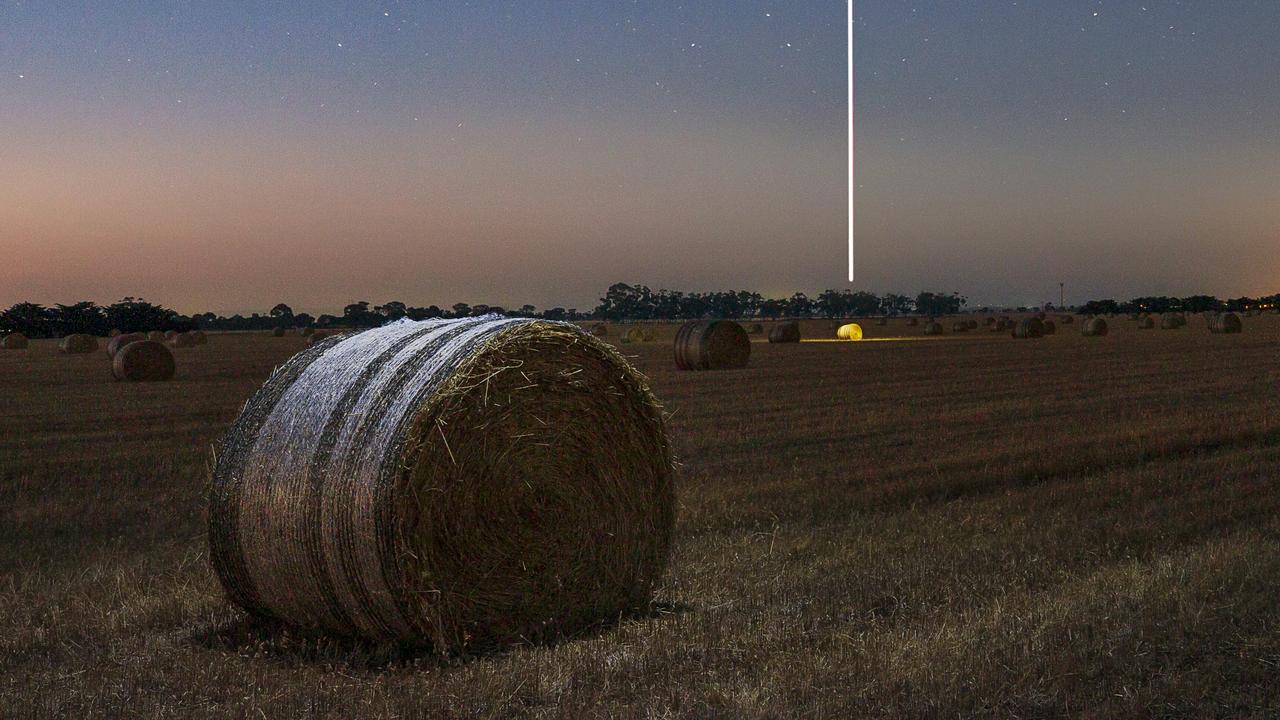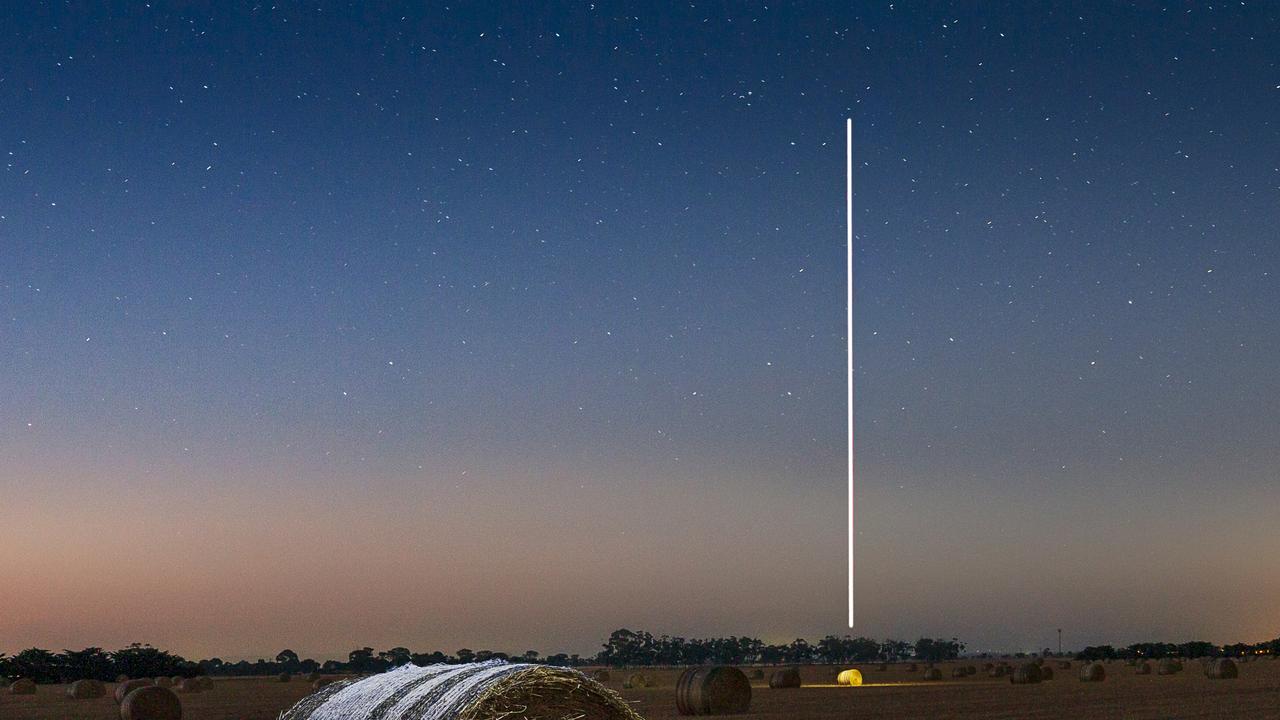Heart of the Nation: Bacchus Marsh 3340
Many of Dani Watson’s long-exposure landscape photos, taken in “nautical twilight”, feature strange light trails. What is going on?

It’s not a UFO, but it is a flying object. It makes an appearance in many of Dani Watson’s long-exposure landscape photographs, tracing light-trails – straight lines, halos, symbols and corkscrews – in the sky. And these otherworldly apparitions are not the only unusual thing about Watson’s work: while most photographers shoot in the “golden hour” of early morning or late afternoon, when the sun’s rays kiss everything with a soft, saturated, slanting light, she waits until “nautical twilight”, 20 minutes after sunset, when the sky is turning navy blue on its way to black and the first stars are emerging. “It’s a magical time,” she says. “With a long exposure you get a kind of dreamy effect.”
Watson spent years as a tennis coach, running youth programs in Melbourne for Tennis Australia, before picking up a camera for the first time during a career break in 2017. She never looked back. After a course in photography at RMIT University she landed a plum job with the renowned landscape photographer Ken Duncan, and spent three years as his offsider. “I learnt so much from Ken, and he continues to be my mentor,” she says. But this year, Watson decided it was time to set up as a freelancer and forge her own path.
The idea of shooting at nautical twilight, and using a drone rigged with LEDs to “paint” light-trails in the sky, came to her on Christmas Day in 2019, when she was back home on her family’s farm near Bacchus Marsh, outside Melbourne. After seven failed attempts that evening, she finally captured this image; she knew she was onto something, and the series Lux Artem (it means “Light art” in Latin) was born.
Watson, 38, has since travelled around the country, from the Painted Hills of desert South Australia to the sea stacks of the Great Ocean Road, to shoot for the series. And next year, she’ll visit the slot canyons of Karijini National Park in the Pilbara, where her mentor made some of his best-known images. “Flying the drone in those canyons will be a challenge, but I’m going to try!”


